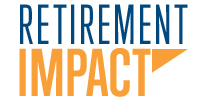No "One Size Fits All" Plan
Retirement plans come in all shapes and sizes: DC Plans, DB Plans, Non-Qual, 401(k), 403(b), 401(a), 457, SEP IRA, Simple IRA, Roth IRA, Cash Balance, HSA… and any other number letter combinations that you can think of. The simple truth is that there is no one-size-fits-all version of a retirement plan; and as a plan sponsor, you need to select a benefit plan that is appropriate for your company and its participants. It is important to understand the basics of plan design, work with a knowledgeable advisor, and evaluate your plan based upon your specific needs.
While designing your company’s 401k plan, six major elements must be defined: eligibility, compensation, contributions, vesting, distributions and loans.
Eligibility | Who can enter the plan and when?
Pretty simple and first on the list is addressing which employees are able to enter the plan and when they are able to do so. Depending on the demographic and culture of your workforce, you may elect certain eligibility requirements such as age, tenure, or full-time employment status. Plan sponsors may choose to grant immediate eligibility or require a waiting period before new employees are allowed to participate in the plan.
Tip: Auto-Enrollment
Compensation | What part of the paycheck?
Next, you must decide what types of compensation will be used in the plan and how they are taxed. Certain types of compensation may be excluded for plan purposes without issue; these may include: compensation earned prior to plan entry and fringe benefits, even bonus and overtime (if special annual testing is passed)[1].
Contributions | Who is putting money into the plan and how?
Your plan may permit both employee and employer contributions. Any employer contributions must be allocated to participant accounts pursuant to a formula in the plan document.
Contributions can be broken into 4 major groups: elective deferrals, employer matching, safe harbor and non-elective (profit sharing) contributions. Each of these groups has its own unique formulas and feature options that can be applied to help maximize savings. It is important to remember that all money entering the plan is subject to annual limits.[2]
Vesting | When do employer contributions become employee assets?
Participants are only entitled to the vested portion of their account balance upon exiting the plan; the remaining unvested portion must be forfeited to the plan. Sponsors can choose to reallocate these forfeitures to pay plan expenses or reduce employer contributions (e.g., the funds may be used as matching contributions for other employees).
Employee contributions and most safe harbor contributions must always be 100% immediately vested. However, plan sponsors may elect a vesting schedule appropriate to specific company needs for matching and profit sharing contributions.
Broadly speaking, there are two kinds of vesting schedules: graded vesting and cliff vesting. Regardless of schedule, a participant must become 100% vested when they reach “normal retirement age.”
Distributions | When can money be withdrawn?
Distribution is a fancy word the IRS and the financial industry use to discuss withdrawing money from the plan. Generally, employees are eligible to take penalty-free distributions at age 59½, but it is not until age 70½ that the IRS requires employees to take distributions.
Often, plans will only permit a lump sum distribution when a participant separates from service and is entitled to a distribution. Under the lump sum option, a participant must take their entire vested account balance in a single distribution. Other distribution forms available include installment payments and partial payments.
You can permit a participant to take a distribution while still employed. These are called “in-service” distributions. These distributions must be available upon the attainment of a certain age (59 ½ or greater) or a “hardship” event. Eligible hardship events are defined by law.
A plan may permit the involuntary cash-out of small account balances. Balances under $1,000 may be distributed in cash to the participant. Balances under $5,000 may be involuntarily rolled into an IRA for the benefit of the participant.
Loans | Can employees borrow from their savings?
Retirement loans are popular among employees but often add administrative complexity for plan administrators. Employers may need to sign off on loan requests and deduct loan payments from payrolls. Offering retirement plan loans is not required: as a plan sponsor you have the authority to allow them or not.
Understanding these 6 key elements can help you to customize a plan unique to your company’s specific needs. Beyond these basics you may even consider implementing advanced plan design options such as auto-features, enhanced matching formulas, or offering a cash balance plan. [We will dive into those options in an upcoming article. Be sure to connect with us on LinkedIn or visit our blog to stay informed.]
We pride ourselves in being knowledgeable advisors and would be happy to walk through a plan design questionnaire to help develop a plan that is right for you and your employees because in the end, the whole point of your company’s plan is getting everyone successfully to retirement!


